
For many beef lovers, filet mignon attains the pinnacle of steak perfection. It's not the largest or most flavorful of grilling steaks, but it is absolutely the tenderest piece of beef on the animal. Short of overcooking it to a shriveled and leathery remnant of its original size, it's almost impossible to make a filet mignon tough. Although both heifers and steers are processed for beef, your filet mignon probably came from a steer.
About the Tenderloin
Filet mignon steaks are cut from the tenderloin, a long muscle located on the underside of the animal's spine. It's a rule of thumb in meat production that the least-used muscles are tenderest, and the tenderloin serves only to support the spine. It's a roughly cylindrical muscle, thick at one end and tapered at the other. Filet mignon is cut from the center section, where the muscle's diameter is consistent. It's also small enough there to provide appropriately thick medallions, when cut to standard portion sizes of 4 to 6 ounces.
Heifer vs. Steer
Diners like tender beef, and young animals produce the tenderest meat. That's why most beef is cut from young heifers and steers. Heifers are immature females, while steers are young males that have been castrated. Castration causes physiological changes in steers, causing them to put on flesh more effectively than heifers and produce more beef for every pound of feed. That's why they account for half of all beef production. Beef heifers are smaller and are usually slaughtered if they aren't needed as breeding stock. They account for approximately 30 percent of beef production, with the remaining 20 percent coming from mature animals.
The Differences
Minimizing stress on the animals at a processing facility is a major design consideration, not only because it's humane but because stressed animals produce tougher meat. This is especially a problem with heifers, which are more excitable and nervous than steers. This means heifer beef is prone to toughness and is often graded lower than steer beef. That's unfortunate, because heifer beef is well-marbled and flavorful. A 2007 study prepared for the National Cattlemen’s Beef Association by researchers from Colorado State University analyzed some of the factors leading to toughness in heifer beef, so the industry could attempt to address the issue and improve heifer beef's quality and saleability.
At Retail
The filet mignon portions at your local supermarket or butcher shop are likeliest to come from a steer, for a combination of those reasons. To begin with, more beef comes from steers. Since heifer beef is often graded lower, and heifers are smaller in size, their tenderloin is often incorporated into inexpensive T-bone and porterhouse steaks. That provides retailers with an attractive option for cost-conscious shoppers, while reserving the larger, higher-graded steer beef for costlier steaks or medallions of filet mignon.
Related Articles

Does a Rib Eye Have a Filet in It?

What Cuts of Meat Are Used for Ground ...
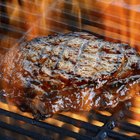
Choice Vs. Prime Beef Grades

The Best Way to Cook a Silverside

What Is the Difference Between a Prime ...
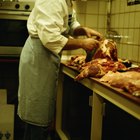
Cuts of Meat From a Front Quarter of ...
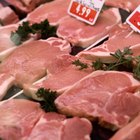
Types of Pork Chops
What Cuts of Beef Come From a Hind?

Different Cuts of Steak

Filet vs. Strip vs. Sirloin
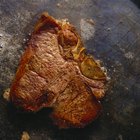
How to Cook Select Grade Beef Steak
The Differences Between Prime & Dry ...

What Are Pork Cutlets?
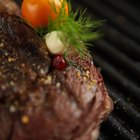
What Is a Chateau Cut?
What Part of the Cow Is Boneless Beef ...

How to Make a Blackbuck Antelope Roast

How to Cook Angus Beef in the Oven

Meat Parts of a Lamb

The Difference Between a Sirloin Roast ...

What Is Sirloin Roast?
References
- On Food and Cooking: The Science and Lore of the Kitchen; Harold McGee
- Beef Research.org: Pre-Harvest Factors Affecting Beef Tenderness in Heifers; J. D. Tatum, et al.
- Beef -- It's What's For Dinner: Tenderloin Steak
Writer Bio
Fred Decker is a trained chef and prolific freelance writer. In previous careers, he sold insurance and mutual funds, and was a longtime retailer. He was educated at Memorial University of Newfoundland and the Northern Alberta Institute of Technology. His articles have appeared on numerous home and garden sites including GoneOutdoors, TheNest and eHow.
Photo Credits
Jupiterimages/liquidlibrary/Getty Images